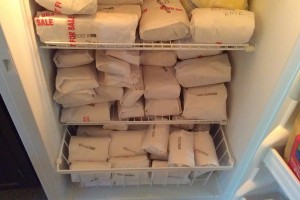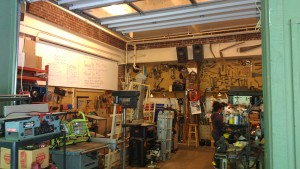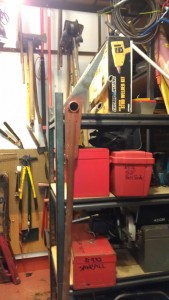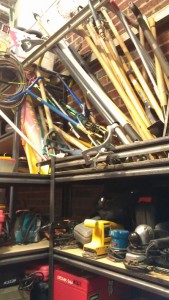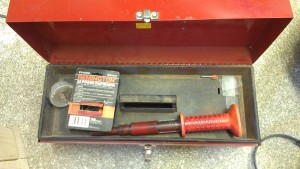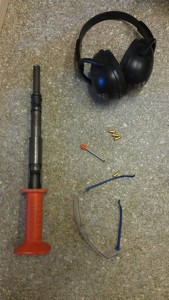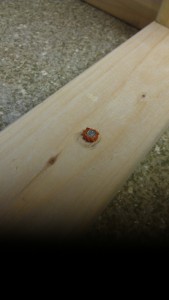When buying the best pays off — buying a quarter cow
It was almost a decade ago now that my girlfriend (now wife) and I made the fateful decision to pick up some delicious Jones Barbecue and bring it back home to eat. It’d been a tough week and a Friday night at home watching TV while eating an amazing beef brisket dinner with sides was just what the doctor ordered.
We came home and started mowing our beef like we’d done so many times before, commenting on the spiciness, soaking up the sauce with cheap bread. About two-thirds of the way through the meal, however, she suddenly stood and quickly walked to the bathroom. I set my plastic fork down as the sounds of someone violently puking her guts out immediately ruined my appetite.
Shaken, but clearly feeling better, she emerged from the bathroom with her stomach as empty as it had been 20 minutes earlier.
We didn’t really know what to make of it and just assumed that the spices were too much for her delicate tummy. That theory went out the window some months later when we were cooking steaks at home. Same thing: immediate, violent vomiting. OK, clearly it had something to do with the meat. Could she simply be allergic to cow meat? That didn’t really seem to be the case because we had certainly eaten beef many other times without a problem. And it also didn’t appear to be food poisoning because I never got sick even though I ate the exact same food. Plus, the reaction was so immediate and so violent that it seemed more like an allergy than a bacteria problem.
After doing a bit more research, we realized that it may not be the beef itself, but rather something in some of the beef we ate that was causing the problem. Something she reacted to, but I didn’t. I finally found an article (now long lost) pointing out that most supposed beef allergies are actually allergies to the antibiotics given to cows on overcrowded cattle lots.
This was worth testing. After doing a bit more reading, we found out that corn makes cattle sick so the beef factories (they’re not “farms”, don’t kid yourself) give them massive doses of antibiotics. They, in fact, give them the antibiotics even when they’re not sick as a preventative. Why are cows being fed food they weren’t evolved to digest? Because it’s cheap. Why is it cheap? Frankly because the government subsidizes the landowners to grow lots of corn thus feeding it to cows is a good way to get rid of it.
If you want a wonderful overview of the modern food system with ways to positively rethink our approach to food, be sure to read Michael Pollan’s The Omnivore’s Dilemma: A Natural History of Four Meals. (Did you catch that? My first affiliate link!)
So we sought out grass-fed beef. In fact, you have to look for grass fed AND grass-finished as some “grass-fed beef” is actually corn-finished as a way to add more fat marbling to the final cut. We carefully selected some overpriced steaks that were reliably sourced and well-labeled. Guess what? No problems at all.
The test was repeated many, many times after that point. And so we continued like this for many years, until I finally read the Ominvore’s Dilemma while in vacation in Kauai a couple years ago. This is where I learned of the concept of “pasture-raised” beef. Without giving away the whole book, the idea is that every creature and plant on the farm has its role to fill, which it was given by eons of evolution. So the basic approach when it comes to cows is that the cows eat the grass, the cows fertilize the grass, the chickens eat the bugs out of the pasture so the cows aren’t covered in insects and the whole system is moved around frequently so no part of the system is overtaxed. In fact, interestingly, even the grass did much better as it had evolved to be trampled (creating water pockets) and fertilized regularly. Simply put, the system is in balance. No antibiotics are needed because there isn’t a stress on the system causing illness.
Fate intervened again when our fridge started to die. We weren’t sure if it was going to be savable, but most of the food we were worried about was our frozen stuff. Plus we had an old bar fridge in our basement that wasn’t being used. We decided to spring for a deep freezer and then use the bar fridge as back-up if our refrigerator truly did bite the dust. (We’d been thinking about getting one anyway as a way to be a bit more self-sufficient and to buy in a bit larger quantities.)
So we were all set when we decided to take the plunge and buy our first quarter-cow. It worked out great when my wife was pregnant as she was told to up her iron intake. So about a year ago my wife, then six months pregnant, and I drove up to Snohomish to pick up our meat.
It’s taken us about a year to eat that meat, with the lesser steaks and some of the roasts taking awhile to get through. (It was just a couple weeks ago that we gnawed our way through some nasty chuck steak.) We still have a few pieces left from last year, ribs (I’ve never cooked them, so that’s something I’ll have to figure out) and a couple roasts left. We also gave away all our offal last year (we just didn’t take it this year) and we gave away a few other choices as gifts.
Is buying a quarter cow a good deal money-wise?
Well, we paid $764 for about 120 pounds of beef. That was $511 for the cow and the rest for the butcher’s time. That puts us somewhere around $6/pound. However, we didn’t actually weigh our product, plus we didn’t take the offal, which is included in the price. On the other hand, this is organic and we know where it all came from and, of course, it also includes plenty of premium cuts like T-bones and rib steaks. I’ve heard a clean rib eye can go for as much as $20/pound. There’s also the difference between “pre-hang” weight and the actual weight of what you buy, so it’s a true apples and oranges problem. To really tell you what our value was compared to supermarket meat, I’d have to weigh each cut and compare each one to retail prices and total it up. I’m way too lazy to do that! Instead, I’ll roughly estimate that we eat beef 1.5 times a week on average and that this amount lasted over a year. That is around $63/month, or $15/week. At one and a half meals per week, that’d be around $10/meal (for two people). That doesn’t include power for our freezer and gas to go up and get the meat, but you get the idea.
Bottom line to us is we don’t feel we’re being gouged, we’re getting quality, clean meat and we have it on-hand when we need it — plus, no puking! To us, that’s a great deal!
What do you think? Is clean meat worth it? Has anyone else tried buying a quarter or half cow?

